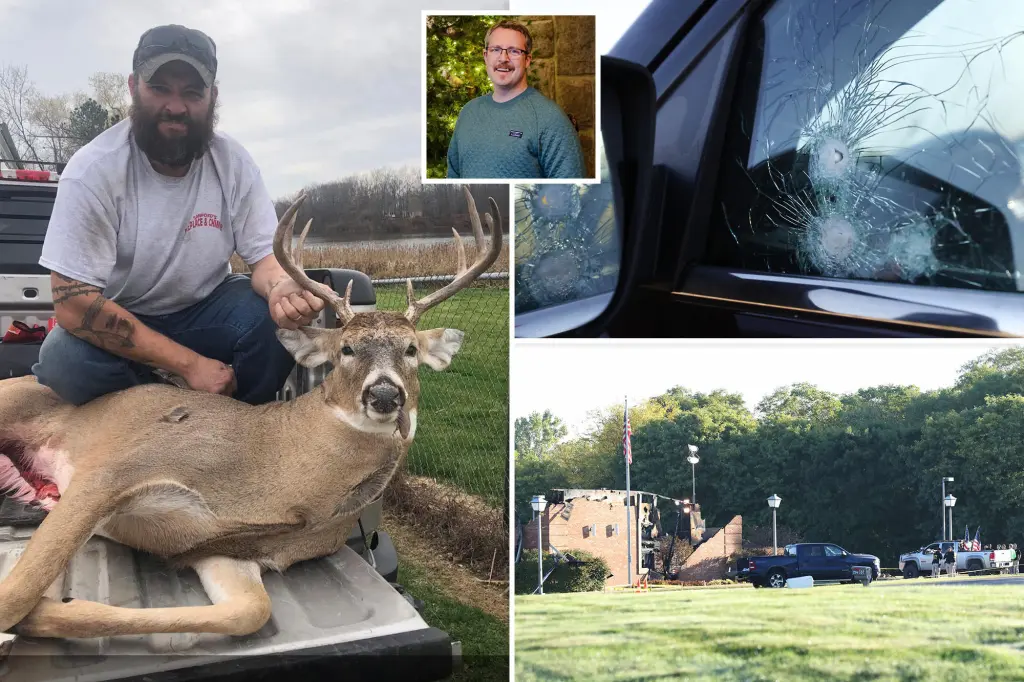A Disturbing Encounter Before Tragedy: The Michigan Church Shooter
In a chilling account that reveals insights into the mindset of Thomas Sanford before his violent attack on a Mormon church in Michigan, we learn of an unsettling conversation that took place just days before the tragedy. Kris Johns, a 44-year-old candidate for Burton City Council, has shared details of his encounter with Sanford while canvassing on September 22. What began as a seemingly pleasant interaction with an “extremely friendly” resident took a disturbing turn that, in retrospect, contained warning signs of the violence to come.
During their initial 20-minute conversation, Sanford appeared open and vulnerable, sharing personal struggles including his service as a U.S. Marine in Iraq and subsequent battles with drug addiction after returning home. Johns recalls the interaction starting normally enough – the kind of doorstep conversation that political candidates have countless times during campaign season. There was nothing immediately alarming about Sanford’s demeanor or presentation that would have signaled his violent intentions. This ordinary beginning makes what followed all the more disturbing, as it demonstrates how extremist views can sometimes hide behind seemingly normal exteriors until they’re deliberately revealed.
The conversation took what Johns described as “a very sharp turn” when religious faith entered the discussion. Sanford mentioned a past relationship with a woman from a Mormon family while living in Utah, before launching into a series of pointed questions about the Church of Jesus Christ of Latter-day Saints. His inquiries covered the religion’s foundational beliefs, Jesus’s role within Mormon theology, the church’s historical development, and its founder Joseph Smith. Johns, who has since reported the conversation to both Michigan State Police and the FBI, characterized Sanford’s questions as following “standard anti-LDS talking points that you would find on YouTube, TikTok, Facebook.” The interrogative nature of the exchange left Johns uncomfortable, later recalling, “I just didn’t know what the next question was going to be.” The conversation reached its most alarming point when Sanford explicitly declared that he considered Mormonism “the antichrist” – a statement that would prove ominously predictive of his actions days later.
Just days after this encounter, Sanford’s hostility toward the Mormon faith escalated to violence when he crashed his Chevy Silverado truck into the front door of the Church of Jesus Christ of Latter-day Saints in Grand Blanc, a neighboring community to Burton. After breaching the entrance, Sanford emerged from his vehicle armed with an assault rifle and began shooting at the hundreds of worshippers gathered inside the church. In addition to the shooting, he deliberately set fire to the building, resulting in its complete destruction. The attack has claimed at least four lives so far, with eight others injured, though authorities have indicated the death toll may rise as they investigate whether additional victims perished inside the burning structure. The deliberate nature of both the shooting and arson suggest a premeditated attack fueled by the same religious animus Sanford had expressed to Johns days earlier.
The revelation of this pre-attack encounter highlights the often-visible warning signs that precede acts of ideologically motivated violence. Johns immediately recognized Sanford when images began circulating in news reports and social media following the attack, stating, “There’s certain things you don’t forget. This is not a forgettable guy.” This recognition underscores how perpetrators of mass violence frequently communicate their grievances and sometimes even their intentions before acting. While hindsight makes these connections clear, the challenge remains in distinguishing between those who merely express extreme views and those who intend to translate those views into violent action. Johns’ experience represents the uncomfortable reality that ordinary citizens may interact with individuals harboring violent intentions without recognizing the gravity of what they’re witnessing until after tragedy strikes.
This devastating attack on a religious community adds to a troubling pattern of violence targeting houses of worship across America in recent years. The targeting of congregants during their most vulnerable moment – gathered in prayer – represents not just an attack on individuals but an assault on religious freedom itself. As communities in Michigan and beyond grapple with this tragedy, questions inevitably arise about how society can better identify and address warning signs of extremism before they manifest as violence. The conversation between Johns and Sanford, occurring just days before the attack, serves as a sobering reminder of how quickly radical beliefs can transform into deadly action, and the continued challenge of preventing targeted violence against religious communities in America.


